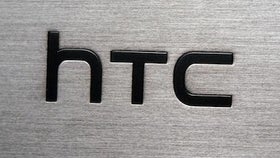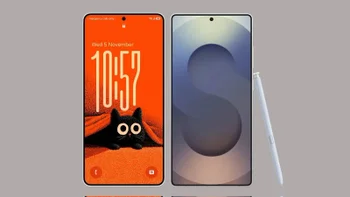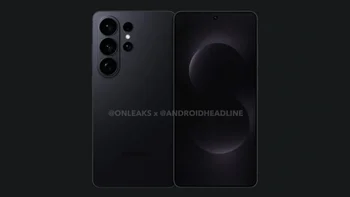These are the best HTC smartphones of the present and the past

The term “best HTC smartphone” says a great deal about a phone coming from one of the most iconic smartphone makers, a company with deep ties to the evolution of the smartphone since its introduction as a new device category.
Obviously, picking out a single device and slapping it with the title of best HTC smartphone would be a fairly subjective approach. As such, we’ll provide several interpretations, which vary depending on the era, price, and importance.
Since this is a rather subjective topic, we’d like you to chip in and let us know which is the best HTC smartphone from your point of view.
While HTC was one of the first smartphone makers to adopt premium all-metal builds, the precedent flagship was often criticized as lacking in innovation in the design department. Although the HTC 10 still makes use of a familiar design language, the new HTC flagship features notable refinements.
The double chamfered edges of the phone are not only charming to look at but they also help with the overall grip of the phone, although the curved back is obviously even more useful in this regard. Strictly in terms of build quality, the can be no denying that the 10 is the best HTC smartphone in history.
With the One M series, HTC opted not to make the jump to QHD display, sticking with FHD panels instead. This year, however, the company pulled all stops and equipped the 10 with a 5.2-inch Super LCD5 panel running at 1440 by 2560 pixels. While the notion that equipping a smartphone with QHD display isn’t the most efficient use of battery juice and processing power, at least the HTC 10 is on equal footing with current-generation high-end Android phones.
The HTC 10 draws its processing power from a Qualcomm Snapdragon 820 chipset, the standard SoC solution for high-end Android phones in 2016. The CPU consists out of a pair of Kyro cores running at 2.15GHz and a pair of Kyro cores running at 1.6GHz. Paired with 4GB of RAM, the Snapdragon 820 runs buttery smooth on the 10. In terms of processing power, the 10 is the best HTC phone for number and pixel crunching tasks.
This year, HTC’s flagship finally comes with a primary camera that can compete with any other flagship smartphone in a blind test and still have a chance of winning.
The HTC 10 comes with a 12MP primary camera with a sensor size of 1/2.3” and a (comparatively large) 1.55µ pixel size. Paired with optical image stabilization, laser autofocus, and dual-LED flash, the camera on the HTC 10 is a perfect solution for both pictures and videos.
It’s also worth noting that the HTC 10 comes with a 5MP selfie sensor with OIS. Interestingly, the HTC 10 is the first smartphone to feature OIS on both the front and the rear cameras.
The display of the phone is a 5-inch panel running at 720 by 1280 pixels. That’s good for a PPI of 294, which is actually decent. Sure, videos will not look as sharp as on a QHD panel, but most people will probably take no issue with the crispness of the display on the Desire 626.
Although the Desire 626 doesn’t come close to rivaling the build quality of HTC’s recent flagships, the design and the build are very good for the price. Our impression is that in terms of design, the Desire 626 is not only the best HTC smartphone that you can purchase at the sub-$200 price point but one of the best-designed affordable smartphones on the market as well.
Under the hood of the HTC Desire 626 beats the heart of a Qualcomm Snapdragon 410 chipset, a SoC that features a 1.2GHz quad-core Cortex-A53 CPU. Outside of the US, the Desire 626 is equipped with a Mediatek MT6752 chipset with an octa-core 1.7GHz Cortex-A53 CPU.
In the memory department, the Desire 626 features 16GB of expandable internal storage and either 1 or 2GB of RAM, depending on the model. The difference between 1GB and 2GB of RAM is usually worth the price difference, and this is the case here as well.
Although the Desire 626 is an affordable smartphone, the handset comes with a decent camera setup. The main shooter is a 13MP sensor with autofocus and LED flash. The selfie shooter is a 5MP sensor that can capture 1080p videos.
The raw specs of the original HTC One (M7) included a 4.7-inch display running at 1080 by 1920 pixels, a Qualcomm Snapdragon 600 chipset with a 1.7GHz quad-core Krait 300 CPU, 2GB of RAM, 32GB of non-expandable internal storage, a 4MP Ultrapixel primary camera, and a 2.1MP secondary shooter on the front. All of this hardware was packaged inside an all-metal body that was no less than impressive at the time of its launch.
For much more details on the handset, head on over to our HTC One review.
Obviously, picking out a single device and slapping it with the title of best HTC smartphone would be a fairly subjective approach. As such, we’ll provide several interpretations, which vary depending on the era, price, and importance.
The best HTC smartphone in years: the new HTC 10
In our eyes, the HTC 10 is the best smartphone that HTC has launched in years. Following a series of unimpressive handsets, the new HTC flagship is a breath of fresh air for the Taiwan-based company.
While HTC was one of the first smartphone makers to adopt premium all-metal builds, the precedent flagship was often criticized as lacking in innovation in the design department. Although the HTC 10 still makes use of a familiar design language, the new HTC flagship features notable refinements.
With the One M series, HTC opted not to make the jump to QHD display, sticking with FHD panels instead. This year, however, the company pulled all stops and equipped the 10 with a 5.2-inch Super LCD5 panel running at 1440 by 2560 pixels. While the notion that equipping a smartphone with QHD display isn’t the most efficient use of battery juice and processing power, at least the HTC 10 is on equal footing with current-generation high-end Android phones.
The new 10 is the best HTC smartphone for photography enthusiasts.
In some ways, the camera setup has been the Achilles’ heel of previous HTC flagships. In 2014, HTC has equipped the One M8 with a rather inefficient 4MP Ultrapixel primary camera. This was the first camera to adopt physically larger pixels in an attempt to capture more light, which would improve the quality of nighttime photos. While the larger pixels featured by the Ultrapixel camera turned out to be a good idea, HTC’s low-resolution implementation has failed to provide the desired results.
With last year’s One M9, HTC boosted the resolution. However, the 20MP Toshiba sensor turned out to be another uninspired choice. While the detail was there as a direct consequence of the resolution, pictures taken with the HTC M9 showcased poor color reproduction even in perfect light conditions. At night, the One M9’s primary camera produced smudgy shots.
This year, HTC’s flagship finally comes with a primary camera that can compete with any other flagship smartphone in a blind test and still have a chance of winning.
The HTC 10 comes with a 12MP primary camera with a sensor size of 1/2.3” and a (comparatively large) 1.55µ pixel size. Paired with optical image stabilization, laser autofocus, and dual-LED flash, the camera on the HTC 10 is a perfect solution for both pictures and videos.
Best HTC smartphone that doesn’t break the bank: HTC Desire 626
If you’re on a budget, the best HTC smartphone that you can currently purchase in the US is the HTC Desire 626. At the moment, you can get an unlocked HTC Desire 626 for $179 from the manufacturer's website.
The display of the phone is a 5-inch panel running at 720 by 1280 pixels. That’s good for a PPI of 294, which is actually decent. Sure, videos will not look as sharp as on a QHD panel, but most people will probably take no issue with the crispness of the display on the Desire 626.
Although the Desire 626 doesn’t come close to rivaling the build quality of HTC’s recent flagships, the design and the build are very good for the price. Our impression is that in terms of design, the Desire 626 is not only the best HTC smartphone that you can purchase at the sub-$200 price point but one of the best-designed affordable smartphones on the market as well.
In the memory department, the Desire 626 features 16GB of expandable internal storage and either 1 or 2GB of RAM, depending on the model. The difference between 1GB and 2GB of RAM is usually worth the price difference, and this is the case here as well.
Although the Desire 626 is an affordable smartphone, the handset comes with a decent camera setup. The main shooter is a 13MP sensor with autofocus and LED flash. The selfie shooter is a 5MP sensor that can capture 1080p videos.
Best HTC smartphone in history: the original HTC One
Judging on the impression that it made with us at the time of its launch, the best HTC smartphone in history is the original HTC One (M7) from back in 2013. While the new HTC 10 has earned 9 out 10 points in our review, the original HTC One fared a little better, earning 9.1 points out of 10.
For much more details on the handset, head on over to our HTC One review.
Follow us on Google News












Things that are NOT allowed:
To help keep our community safe and free from spam, we apply temporary limits to newly created accounts: